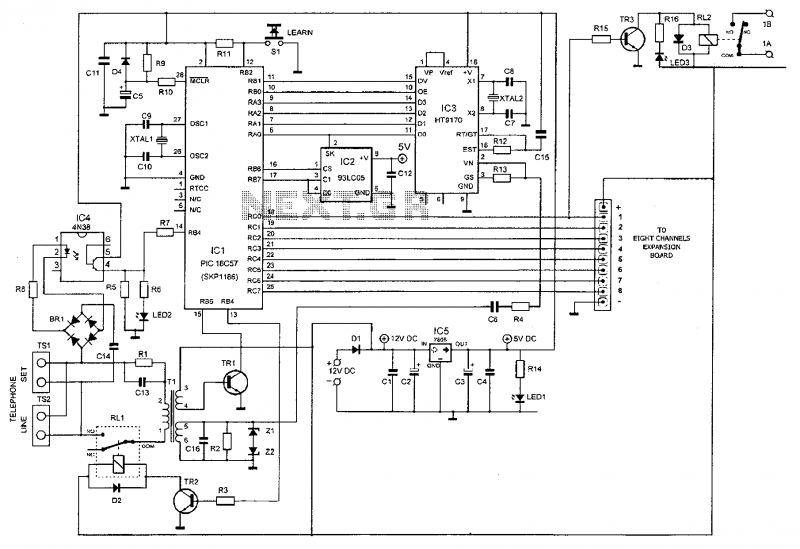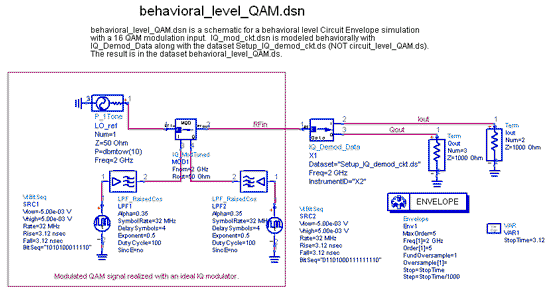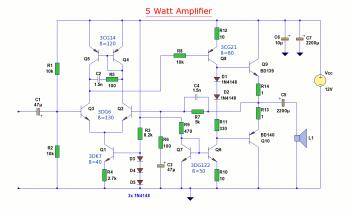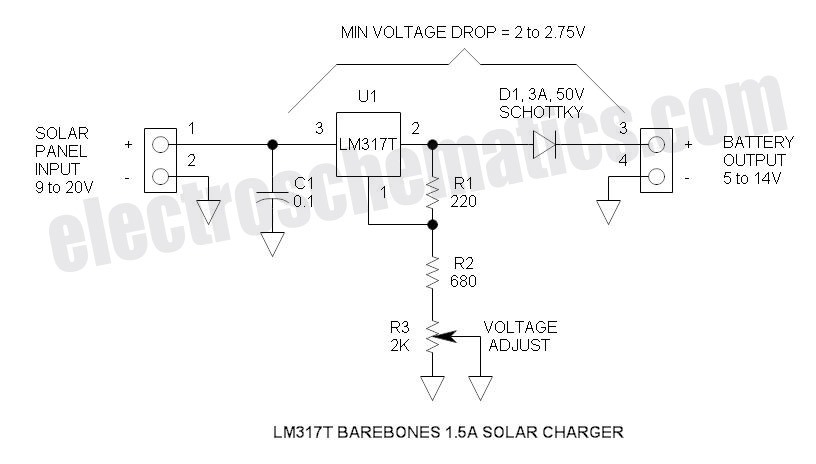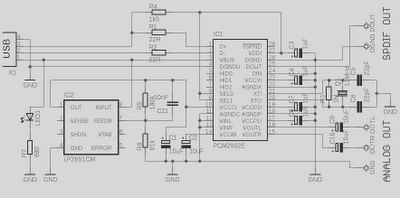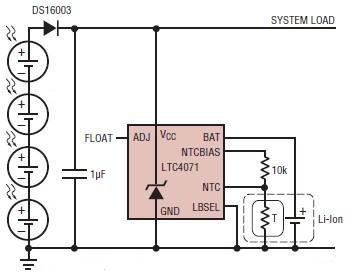
Solar TrackerCircuit. This Based On The LM339 IC
The following circuit illustrates a Solar Tracker Circuit Diagram. This circuit is based on the LM339 integrated circuit. Features include a 10nF ceramic capacitor (103z) and a 1MΩ resistor.
The Solar Tracker Circuit utilizes the LM339 quad comparator IC to facilitate the tracking of sunlight. The primary objective of this circuit is to maximize the exposure of solar panels to sunlight by adjusting their orientation based on the intensity of light detected. The circuit employs photodiodes or light-dependent resistors (LDRs) as sensors to detect light levels.
When light falls on the sensors, their resistance changes, which in turn alters the voltage levels at the inputs of the LM339. The LM339 compares these voltages and outputs signals that control the movement of motors or servos, enabling the solar panels to pivot towards the light source.
Key components in the circuit include the LM339 IC, which operates with a supply voltage typically between 3V to 36V, allowing it to interface with various power sources. The 10nF ceramic capacitor helps to stabilize the power supply and reduce noise in the circuit, ensuring reliable operation. The 1MΩ resistor is used to set reference voltages and assist in the proper functioning of the comparator inputs.
For optimal performance, the circuit may also include additional components such as potentiometers for fine-tuning the sensitivity of the light sensors and diodes for protection against reverse polarity. The design can be further enhanced by incorporating a microcontroller for more sophisticated tracking algorithms, allowing for improved accuracy and efficiency in solar panel positioning.
This Solar Tracker Circuit serves as an effective solution for increasing the energy output of solar panels by ensuring they are always oriented towards the sun, thereby maximizing solar energy capture throughout the day.The following circuit shows about Solar Tracker Circuit Diagram. This circuit based on the LM339 IC.Features: 10n ceramic capacitor (103z), 1meg .. 🔗 External reference
The Solar Tracker Circuit utilizes the LM339 quad comparator IC to facilitate the tracking of sunlight. The primary objective of this circuit is to maximize the exposure of solar panels to sunlight by adjusting their orientation based on the intensity of light detected. The circuit employs photodiodes or light-dependent resistors (LDRs) as sensors to detect light levels.
When light falls on the sensors, their resistance changes, which in turn alters the voltage levels at the inputs of the LM339. The LM339 compares these voltages and outputs signals that control the movement of motors or servos, enabling the solar panels to pivot towards the light source.
Key components in the circuit include the LM339 IC, which operates with a supply voltage typically between 3V to 36V, allowing it to interface with various power sources. The 10nF ceramic capacitor helps to stabilize the power supply and reduce noise in the circuit, ensuring reliable operation. The 1MΩ resistor is used to set reference voltages and assist in the proper functioning of the comparator inputs.
For optimal performance, the circuit may also include additional components such as potentiometers for fine-tuning the sensitivity of the light sensors and diodes for protection against reverse polarity. The design can be further enhanced by incorporating a microcontroller for more sophisticated tracking algorithms, allowing for improved accuracy and efficiency in solar panel positioning.
This Solar Tracker Circuit serves as an effective solution for increasing the energy output of solar panels by ensuring they are always oriented towards the sun, thereby maximizing solar energy capture throughout the day.The following circuit shows about Solar Tracker Circuit Diagram. This circuit based on the LM339 IC.Features: 10n ceramic capacitor (103z), 1meg .. 🔗 External reference
